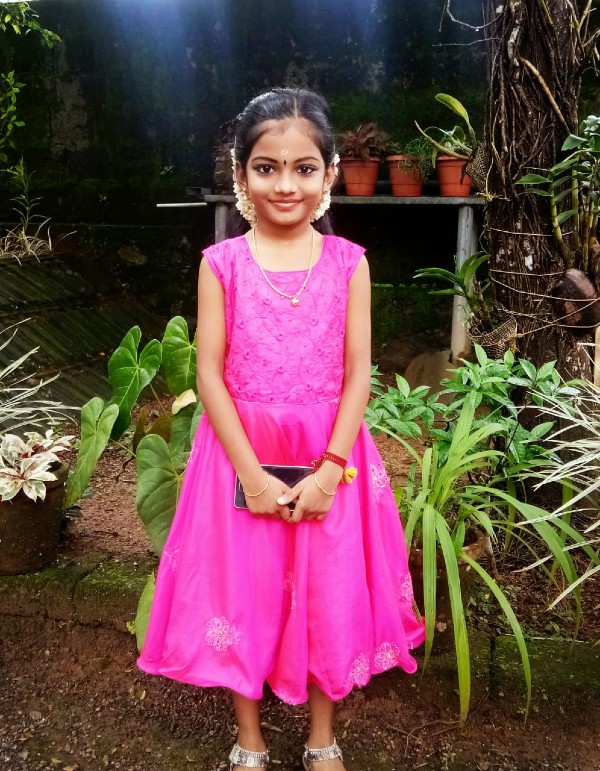People rarely ever realise the value of something until it’s gone. For Ramkumar M, who lost his vision 28 years ago, this statement is something he believes to his very core. “I lost my vision in 1992. I didn’t know what to do or how to live a life without my eyes. I even tried to commit suicide more than three times,” recalls Ramkumar, a resident of Kerala’s Ernakulam district.
He adds that he had the opportunity to see his family members, unlike others who have been visually impaired since birth. “I have seen different places and people so it was initially difficult for me to adapt to a life without sight,” says the 52-year-old.
With the help of friends and family, Ramkumar was given a new lease on life. He especially thanks Moly Koshy, a social worker who got in touch with him, saying, “It was Moly aunty who taught me to live my life again. She took me to different places, introduced me to others and bought me food. While eating, she would ask me if I ever thought about people who couldn’t even taste food?” Moly would take him to visit the cancer patients home. “She would tell me how lucky I am to have hands, legs and other parts of my body. She then motivated me to work towards a greater purpose – eye donation campaigns. I will always be grateful to her for my second life,” says Ramkumar, who lives with his wife Satheedevi and two daughters, Aparna and Aiswarya.
In 1996, Ramkumar, who is an ITI (Industrial Training Institute) diploma holder, got a job at BPCL. But after taking voluntary retirement, he is now on a mission to find 25 lakh eye donors in the state within a decade.
“If we can get 25 lakh donors, then 50 lakh people will get vision.,” he says, adding that up until now he received 50 donors’ eyes. He shares that nearly 70 families have signed the consent form for eye donation post death. “I made 7,000 families aware of the process and managed to get around 3.5 lakh donors to sign the consent form,” Ramkumar says.
He adds, “I have faced a lot of challenges while working on this initiative. There are times when family members of the deceased eye donors ask me to leave their home, even though we received the donor’s consent before death. This is the only reason why I go to different homes to talk to them so that after death the family members won’t refuse the donation. I am also happy to share that I get more donors from the families I visit after they understand my condition.”
‘Eye’ can

Malavika S is the youngest donor who has signed the consent letter to donate her eyes. The class 4 student says, “I was saddened to see Ramkumar uncle, so I told him that I will donate my eyes to him. But he said that he can’t take my eyes as he wont get his vision back even after a transplant. Still, I have signed the consent form hoping that someone will get vision from my eyes. I have also requested my friends and family to donate their eyes and many have agreed.”
In Sreedevi Sabarinath’s family, two have donated their eyes and the remaining six, including herself, have signed the consent form to donate eyes. “If my eyes can help others then I am more happy to donate them. My grandparents have already donated their eyes while my parents, siblings, husband, daughter and I have signed the consent form,” says the school teacher from Kottayam.
Busting myths
Many have a misconception that the complete eye is removed from the socket for the donation. The Better India spoke to Dr Anil Rathakrishnan, the associate professor at Amrita hospital working with the department of Ophthalmology, to know more about it. “Some of the government hospitals still take the whole eye out because they don’t have access to certain mediums. If only the cornea is removed, then it needs to be kept in the preservatives medium immediately. Most of the private eye banks take only the cornea. On a monthly basis we get approximately three donation cases and yearly 40 to 60,” says Anil.
He adds, “A big change in citizens’ mindset when it comes to eye donation is because of the campaign of the Central Government’s SAKSHAMA, which has a wing called CAMBA (Cornea Andhatav-Mukt Bharat Abhiyan). They have teamed up with Amrita hospital and many other organisations for eye donation.”
The usual age group who signs the consent forms are between 20 to 30. Anil adds, “In eye donation, we just need the cornea, unless there is a corneal disease you don’t have to be worried about donating eyes. Even if you have diabetes, hypertension, asthma, cancer you can still donate eyes, so long as the cancer doesn’t affect the eyes,” he says.
(Edited by Yoshita Rao)
If you found our stories insightful, informative, or even just enjoyable, we invite you to consider making a voluntary payment to support the work we do at The Better India. Your contribution helps us continue producing quality content that educates, inspires, and drives positive change.
Choose one of the payment options below for your contribution-
By paying for the stories you value, you directly contribute to sustaining our efforts focused on making a difference in the world. Together, let's ensure that impactful stories continue to be told and shared, enriching lives and communities alike.
Thank you for your support. Here are some frequently asked questions you might find helpful to know why you are contributing?

